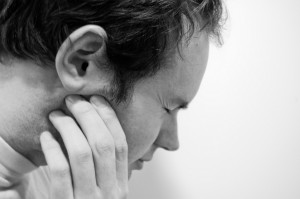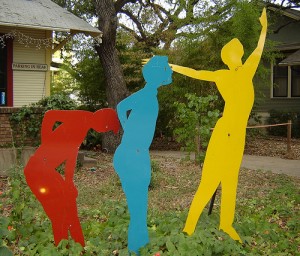Home Treatments for TMJ Dysfunction
 You can perform self-care treatments at home for TMJ dysfunction. Most often, the Temporomandibular joint dysfunction does not develop into a full disorder and the symptoms would disappear after it is able to recover and have enough rest.
You can perform self-care treatments at home for TMJ dysfunction. Most often, the Temporomandibular joint dysfunction does not develop into a full disorder and the symptoms would disappear after it is able to recover and have enough rest.
Pain medications such as aspirin, ibuprofen or acetaminophen can ease the pain suffered due to TMJ dysfunction. Since chewing can be quite painful for sufferers of TMJ dysfunction, it is advised to eat soft foods during this time. Apply ice packs on the injured area when the injury is still present. Rest your jaw as this could help in healing your TMJ.
Warm compress application is also advised to be put on the area where you feel pain. 20 minutes after applying the warm compress, you can try home therapy exercises such as opening and closing of the jaw moving from side to side. Repeat this up to 5 times a day at five minutes per session for 2 to 4 weeks. Make sure you don’t open your mouth wide while doing this exercise.
Medical Treatments for TMJ Dysfunction
Conservative medical treatments may also be necessary. The doctor may ask you to perform gentle stretching for the muscles on your jaw. He or She may also require you to perform relaxation exercises. Stress can be a factor that will affect TMJ treatment thus stress-reduction techniques that manages the stress will help the patient relax his or her jaw alongside with the rest of his or her body.
A bite plate or splint may also be used. This is like a mouth guard that will help in reducing the teeth grinding or clenching especially when the patient sleeps at night. This will also ease the muscle tension on the jaw. However, if using the splint will increase the pain, the patient must stop using it.
If conservative treatments won’t work, a doctor may require you to go a step further and consider some of the invasive techniques to treat TMJ dysfunction.
Cortisone injection can be quite helpful in relieving the pain and inflammation of the jaw. Another procedure that would help in relieving the pain quickly is done at the doctor’s office and under local anesthetics. The doctor would insert 2 needles in your TMJ for washing. One of the needles would be connected to a syringe that has a cleansing solution and it exits through the other syringe. Sometimes, aside from cleansing agents, the doctor may also inject pain medication this way as well.
If these still won’t work for the patient, surgery may be necessary though this is already considered as the final option. Artificial implants may be used as a replacement to the jaw joints. This is an irreversible method and must be avoided if other options are still available.
Chiropractic treatment for TMJ Dysfunction
This is a protocol that we use in our office: Electrical stimulation is used for 15 minutes on effected side. Deep tissue massage of the masseter muscle bilaterally. Using rubber gloves on one hand perform a deep tissue massage of internal lateral pterigoid muscle (very painful but very useful and effective procedure). 5 minutes of Erchonia Cold Laser PL 5000 in the painful side of a TMJ. Upper cervical chiropractic adjustment.
Do take note that most of the cases of TMJ dysfunction cannot be cured as it is most often a cyclic disorder. Modifications in lifestyle and proper treatment could improve the patient’s life without any limitation in function or pain.
Questiom: Was this information helpful? What kind of therapy have you had for your TMJ Dysfunction?
